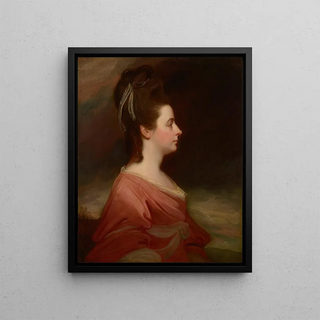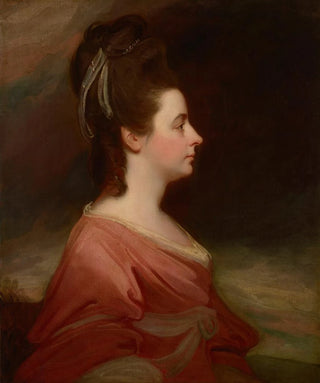Art print | Portrait of Harriet Blanchard - George Romney


View from behind

Frame (optional)
In the fascinating world of art, some works manage to transcend time and capture the very essence of their era. The "Portrait of Harriet Blanchard" by George Romney is one of those iconic pieces that, through its delicacy and realism, transports the viewer to the heart of 18th-century Britain. This painting, rich in emotion and nuance, invites us to explore not only the beauty of its subject but also the subtleties of the painter's technique. Through this portrait, we discover a woman whose gaze seems to tell a story, a life full of mysteries and elegance.
Style and uniqueness of the work
George Romney's style is distinguished by its approach that is both classical and innovative. In the "Portrait of Harriet Blanchard," the artist manages to marry refined painting techniques with a modern sensitivity for his time. Harriet Blanchard's features are rendered with striking precision, each detail of her face carefully crafted to reflect her personality. The light, subtly manipulated, plays a crucial role in the composition, illuminating the model's face and creating an intimate atmosphere. The chosen colors, both soft and vibrant, enhance the impression of life and movement, making this work almost tangible. This portrait does not merely depict a woman; it immortalizes a soul, capturing a fleeting moment of beauty in time.
The artist and his influence
George Romney, a major figure in British portraiture, established himself in the 18th century thanks to his exceptional talent. Trained in the shadow of great masters, he developed a style that is uniquely his own, combining classicism with romantic sensitivity. His work goes beyond simple representation; it explores human emotions and interpersonal relationships. In the context of his era, Romney influenced many artists, encouraging them to question the nature of portraiture and to experiment with light and color. His innovative approach paved the way for generations of artists, making him a pillar of British art history. The "Portrait of Harriet Blanchard" perfectly illustrates

Matte finish

View from behind

Frame (optional)
In the fascinating world of art, some works manage to transcend time and capture the very essence of their era. The "Portrait of Harriet Blanchard" by George Romney is one of those iconic pieces that, through its delicacy and realism, transports the viewer to the heart of 18th-century Britain. This painting, rich in emotion and nuance, invites us to explore not only the beauty of its subject but also the subtleties of the painter's technique. Through this portrait, we discover a woman whose gaze seems to tell a story, a life full of mysteries and elegance.
Style and uniqueness of the work
George Romney's style is distinguished by its approach that is both classical and innovative. In the "Portrait of Harriet Blanchard," the artist manages to marry refined painting techniques with a modern sensitivity for his time. Harriet Blanchard's features are rendered with striking precision, each detail of her face carefully crafted to reflect her personality. The light, subtly manipulated, plays a crucial role in the composition, illuminating the model's face and creating an intimate atmosphere. The chosen colors, both soft and vibrant, enhance the impression of life and movement, making this work almost tangible. This portrait does not merely depict a woman; it immortalizes a soul, capturing a fleeting moment of beauty in time.
The artist and his influence
George Romney, a major figure in British portraiture, established himself in the 18th century thanks to his exceptional talent. Trained in the shadow of great masters, he developed a style that is uniquely his own, combining classicism with romantic sensitivity. His work goes beyond simple representation; it explores human emotions and interpersonal relationships. In the context of his era, Romney influenced many artists, encouraging them to question the nature of portraiture and to experiment with light and color. His innovative approach paved the way for generations of artists, making him a pillar of British art history. The "Portrait of Harriet Blanchard" perfectly illustrates






